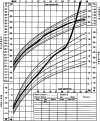Central Hypoventilation Syndromes
- PMID: 24678286
- PMCID: PMC3963184
- DOI: 10.1016/j.jsmc.2013.10.005
Central Hypoventilation Syndromes
Keywords: Autonomic dysfunction; CCHS; Central hypoventilation; Children; Home ventilation; Noninvasive ventilation; PHOX2B; ROHHAD.
Figures



References
-
- Nurse CA. Neurotransmitter and neuromodulatory mechanisms at peripheral arterial chemoreceptors. Exp Physiol. 2010;95(6):657–67. - PubMed
-
- Gozal D, Kheirandish-Gozal L. Disorders of breathing during sleep. In: Wilmott RW, editor. Kendig and Chernick's disorders of the respiratory tract in children. Elsevier; Philadelphia: 2012. pp. 1067–86.
Grants and funding
LinkOut - more resources
Full Text Sources
Other Literature Sources

